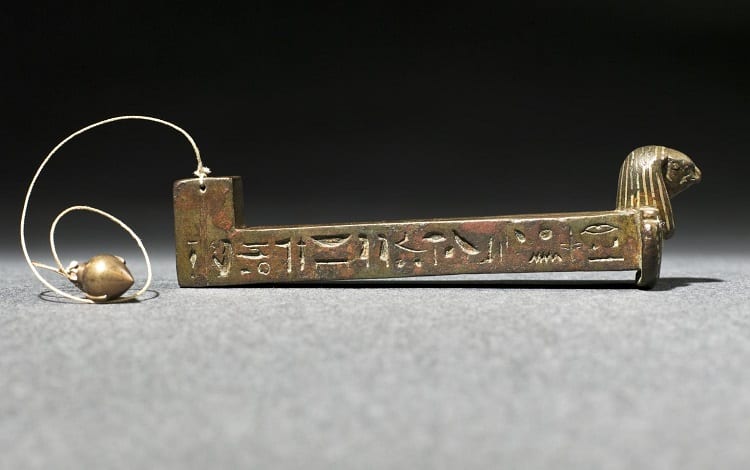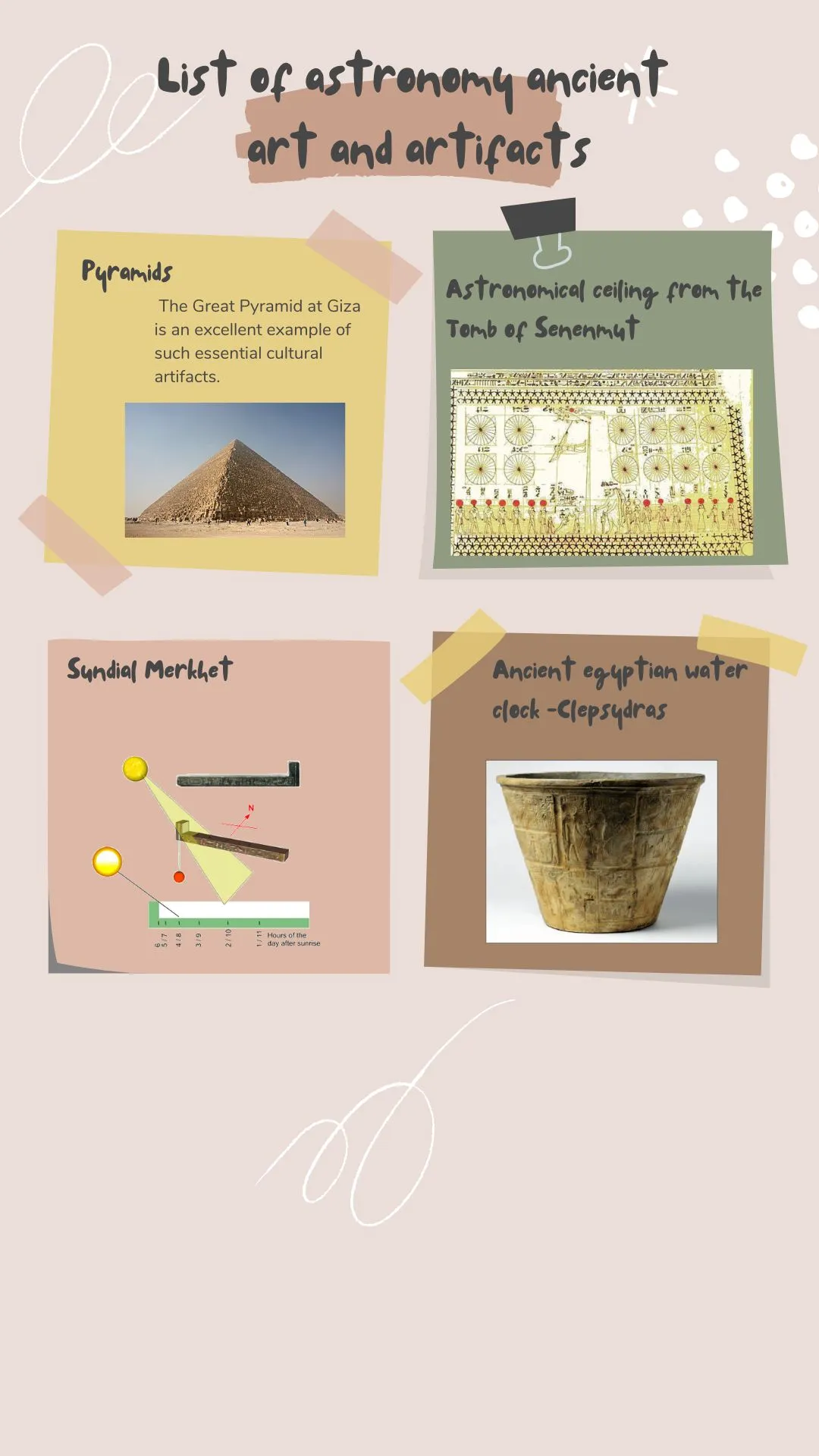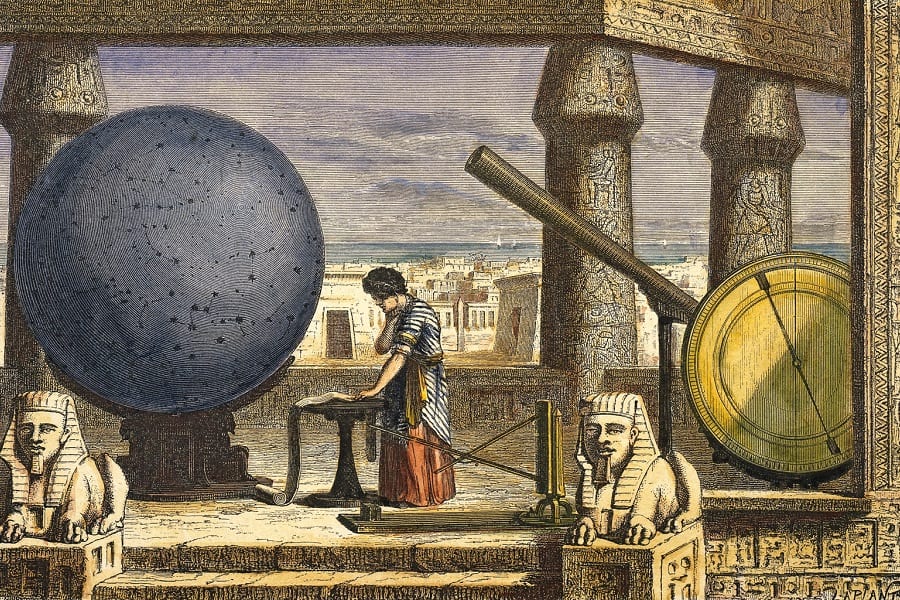You might have something in common with the ancient Egyptians: a passion for astronomy!
The ancient Egyptians used to take measurements from the stars that they used for various tasks and activities. The night sky was a huge part of their lives.
Did they make use of telescopes?
You might wonder if the ancient Egyptians were studying the stars and other celestial objects with the use of telescopes, but although there’s no evidence they did, they certainly did have other instruments at their disposal.
There’s lots to know about ancient Egyptian astronomy. Let’s start with how astronomy was used in the construction of pyramids.
Contents
How Astronomy Shaped Construction

When the ancient Egyptians built their temples and pyramids, a lot of attention went to the stars, which they used as their inspiration. They would look at star constellations such as Orion with the use of a merkhet.
This instrument is similar to an astrolabe, which is an instrument that makes astronomical measurements, especially those of the altitudes of celestial bodies.
Then, the Egyptians would use this information to pinpoint where they should put the foundations of their buildings, such as the Great Pyramid at Giza.
In this pyramid’s design, its four sides were aligned so that they faced north, east, south and west, with hardly any error, which is quite amazing.
The Egyptians believed that gods resided in Duat, the kingdom of Osiris.
Take a look at a couple of books I recommend reading!
This is found in the place where Orion and Sirius rise before dawn on the summer solstice, so their relationship with the stars and constellations is one that was very important to them – so much so that it’s even been theorised that the Giza plaza with its three pyramids was built to reflect Duat because of how the three pyramids are thought to symbolize the three stars that exist in Orion’s Belt.
Interestingly, as History Museum reports, by aligning their buildings with the stars, the ancient Egyptians believed they were bringing divine energy to the earth.
How Astronomy Was Used To Tell The Time
Astronomy began in Egypt around the 5th millennium B.C. The people of that time made use of stone circles that, when discovered by researchers, were proof that the Egyptians could mark time and even predict when the floods would come.
It’s been said that they predicted the floods by looking at when the Sepdet star (Sirius as we know it today) rose in the sky.
They also came up with a system of constellations that were different from those developed by the Mesopotamians and Greeks. For example, they found a way to use the stars that they could see in the sky to help them figure out what time it was at night.
They did this by dividing the sky into 36 groups of stars that were known as decans.
The Egyptians discovered that each group of stars would rise 40 minutes later every night and by paying attention to the position of one group of stars in relation to the day of the year, this would tell them what time it was.
The Egyptians also used the Sirius star to start their new year. Around 3000 B.C., they invented a 365-day calendar based on what they saw in the sky.
When there was a flood, this signified the beginning of the Egyptian year, and this flood always coincided with the rise of Sirius in the sky. Amazingly, the calendar was divided into 12 months and each month had 30 days, so it was not quite unlike our own modern-day calendar.
What Instruments The Egyptians Used For Astronomy

We’ve already mentioned the merkhet, but the ancient Egyptians had other instruments (now artifacts) that they used for astronomy purposes. These included the sundial and water clocks.
A sundial tells the time of day when there’s sunlight because of how it contains a flat plate and a gnomon, which casts a shadow onto the dial.
On the other hand, a water clock (known as a clepsydra) was a device that made use of a gradual flow of water to tell people the time. How it worked was that it had a small floating vessel that pushed water through a hole until it sank.
The ancient Egyptians used instruments to see the circumpolar stars (stars that are always above the horizon) and then they would draw lines on the ground so as to mark the stars’ directions.
This played an important role in how they built their temples and pyramids. One of these crucial instruments was the merkhet. It had a horizontal wooden bar with a hole at one end. The astronomer of the community would look through this hole to locate the position of the star.
Another instrument they used was known as the bay en imy unut, as Cornell University research points out. This had a V-shaped slot. By looking through this slot, the astronomer would be able to see and locate the stars.
List of astronomy ancient art and artifacts

Star Maps For A Tomb
Star maps are very useful for astronomers as they help them to identify and locate where celestial bodies are found. It’s incredible to think that the earliest record of star maps dates back to ancient Egypt.
Researchers found a star map that was the main part of décor in a tomb found in the 18th century. The tomb belonged to Queen Hatshepsut’s vizier and calendar registrar Senenmut, a tutor, government official, and architect at the time.
When he died, his tomb revealed decorations that included decanal stars, constellations of the southern sky, and planets such as Mercury, Saturn, Jupiter, and Venus, as research via Cornell University states.
Astronomers In Ancient Egypt
While there are hints of astronomy from the tomb of Senenmut, it’s interesting to note that there were many people at the time who made ground-breaking discoveries related to astronomy and the universe.
IbnYunus was an astronomer who paid attention to the position of the sun for many years with the use of an astrolabe and his observations about eclipses set the groundwork for future research.
Another notable person of the time was Ali ibn Ridwan, a physician who observed a supernova called SN 1006. It was the brightest star event in history. When it was positioned low in the southern sky, Ibn Ridwan saw this as a bad omen predicting bad fortune.
He saw astrology as providing useful understanding of the past as well as predicting what could happen in future, but he didn’t see it as precise as the mathematical and geometrical calculations found in astronomy, as Aramco World reports.
Then, in the 14th century, Egyptian astronomer Najm al-Din al-Misri released work outlining 100 different types of astronomical and scientific instruments, such as sun dials and astrolabes.
What Astronomy Achievements Were Made By Egyptians

Much of what the Egyptians discovered about the universe and astronomy was information that laid the groundwork for our knowledge.
- The ancient Egyptians knew about 43 of the constellations in the universe around the time of the 13th century B.C. We have found that there are 88 constellations.
- While we know that there are nine planets, the Egyptians could already name five. They also knew about the retrograde motion of Mars, as well as the revolutions of Venus and Mercury around the sun.
- We can trace the beginning of telescope lenses back to 2500 B.C. in Egypt because this was when the first man-made glass objects were found. However, the first lens was the Nimrud lens that was found at the Assyrian palace of Nimrud in modern-day northern Iraq, and that was in 750 B.C.
- That said, there was some evidence that pointed to optical instruments possibly being used by the ancient Egyptians. In the Old Kingdom in Egypt, a period of time that spans c. 2686 to 2181 B.C., a tomb revealed a statue with eyes intact and they displayed high-quality convex crystal lenses, as author Dr. Donald Chittick reports. This shows that there was the potential for advanced optical technology at the time of ancient Egypt that could’ve set the ball rolling for the invention of the telescope.
Related Questions
Why did the ancient Egyptians only see five planets?
Since they didn’t have telescopes, they used the naked eye to view planets, so only Venus, Mars, Saturn, Jupiter, and Mercury were visible.
What could a merkhet do?
Ancient Egyptians used merkhets to tell time during the night. These devices were very accurate and could also make astronomical observations, such as in the construction of tombs and temples.
Conclusion
When we think of astronomy, we think of it as something that modern scientists have helped us to better understand but it’s clear to see after reading this article that astronomy played a big role in the lives of the ancient Egyptians.
From star maps to sundials and more, the ancient Egyptians laid down the foundation for the way we view the stars and other celestial objects today.


